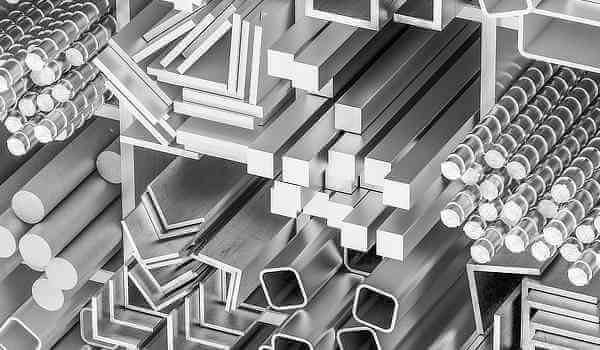6 min read
3D Printing and Nanotechnology
3D printing and nanotechnology are two fields of research and innovation that, at first glance, might appear worlds apart. The former focuses on...

Aluminium alloys are incredibly versatile, sturdy and reliable. For this reason, they are very sought-after in engineering, construction, and automotive applications, making for one of the most widespread metal materials, alongside steel. Keep reading to learn more about the qualities, applications, and unique characteristics of aluminum alloys. While aluminum presents some amazing properties as a pure element, it might not be strong enough for the high-durability purpose. For this reason, it can be combined with other elements in order to form alloys, which are exponentially more durable and suitable for industrial applications. Aluminum alloys are particularly desirable when engineers seek to reduce the weight of an item (for example, an airplane) without compromising in terms of strength.
To this day, aluminum is one of the most popular non-ferrous metals to be used in construction, engineering, and industry, and it is not surprising at all. There are not many materials out there that are as durable, workable, and versatile as aluminum alloys. Although they are widely regarded for their properties by engineers and manufacturers, most people out there might not be aware of the properties of aluminum. What is this metal capable of? When most people think of this element, they certainly don’t make the connection with rocket scientists or advanced automotive engineering! The first thing that comes to most people's minds is undoubtedly kitchenware, or perhaps other common household items.
However, this remarkable element is incredibly versatile, and it is not just something that’s useful to make fancy pots and pans! Aluminum is indeed a truly remarkable metal, known for its strength, flexibility, and versatility. Because of its sought-after properties, aluminum is used in many industries and it stands out as a fantastic alternative for many applications, ranging from insulation to kitchenware, construction, prototyping, and more. Aluminum alloys are particularly popular as well.
An “alloy” is a blend of different metallic elements, often created to enhance the strength and durability of the material. An aluminum alloy typically consists of the latter as the main metal in the blend, often combined with other elements, such as silicon, tin, manganese, or even copper, tin, and magnesium, depending on the desired application. With the right combination of elements, aluminum can acquire a lot more strength, and in some cases, it could even outperform steel. Alloys bring the same benefits of pure aluminum, and they are also relatively cost-effective because they have a lower melting point.
You’ll often find aluminum alloys within the context of engineering, as well as the construction of light-weight components and corrosion-resistant metal parts. One of the industries that highly relies on aluminum alloys in aerospace, as well as the automotive industry. In this particular context, aluminum alloy is becoming an increasingly important material. This is because it can reduce the weight of a vehicle, thus maximizing its efficiency and fuel sustainability in the long run. In addition to that, the durability of the aluminum alloy makes it a safety-conscious option as well, since it performs really well on crash tests and exceeds the requirements of most safety regulations all around the world. Aluminum is much lighter than steel (about one-third its weight) and it enables manufacturers to build strong metal parts, without adding unnecessary weight to put a damper on the performance of their vehicles.
High-Strength aluminum alloy is also a very popular implement in building construction. Steel still remains one of the most fundamental materials in construction, but aluminum alloys are definitely a very close second. When building modern skyscrapers and structures, it is quite important to account for strength and safety. The added benefits of high corrosion resistance and low flammability, as well as aluminum’s natural insulation property, make this a perfect choice. In recent years, aluminum has been highly rated internationally for use in structures where the outbreak of fire might be a possibility. It takes roughly two times as much heat to raise the temperature of aluminum by one single degree when compared to a similar mass of steel. Moreover, Aluminum doesn’t burn in air, nor does it cause smoke and other toxic fumes.
You’ll often find aluminum in electrical and electronic engineering applications, due to the fact that it doesn’t cause any magnetic interference. Aluminum, unlike other metal, is actually non-ferromagnetic, making it very valuable and important for electronic manufacturing, electrical shielding, and other applications.
In addition to being extremely sturdy, aluminum alloy, especially when magnesium is involved, is less flammable when compared to other alloys, and less susceptible to corrosion. It is very important to choose the best aluminum alloy for each given application, accounting for factors such as malleability, density, ductility, and tensile strength, among other things.
It’s is not surprising to see that major institutions such as NASA and several Armies around the world put their trust in aluminum alloys for many important applications. If this wasn’t a strong enough testament concerning aluminum’s massive strength, here is another one for you: Shark cages!
Sharks are some of the oldest, deadliest killing machines on planet Earth, and their bite is strong enough to break whale bones and tear through a human limb like a hot blade going through melted butter. However, they can’t get through aluminum alloy cages! Seawater is highly corrosive for metals due to its acidic content and salinity. However, aluminum is very resistant when it comes to corrosion, as mention earlier. In addition to that, it has a really good buoyancy to it, meaning that it has a tendency to feel lighter in the water.
So, there you have it, an outlook of the many faces of aluminum alloys. These incredibly multi-faced materials afford a lot of versatility to manufacturers and producers, and they are becoming increasingly popular as well.
In conclusion, these are only some of the things that make aluminum fantastic. From big governmental institutions to huge corporations and small independent manufacturers, many people value the benefits and perks of aluminum and its many related alloys, which are often synonym with flexibility, strength, and reliability
Sources and further reading
http://www.alcotec.com/us/en/education/knowledge/techknowledge/understanding-the-alloys-of-aluminum.cfm
https://materialsdata.nist.gov/bitstream/handle/11115/173/Aluminum%20and%20Aluminum%20Alloys%20Davis.pdf
https://www.asminternational.org/documents/10192/1849770/05917G%20Sample.pdf/7e7ed58b-3fd6-46bf-aa91-14c6e1360084
https://www.sciencedirect.com/topics/materials-science/aluminum-alloys
https://firesciencereviews.springeropen.com/articles/10.1186/s40038-015-0007-5
https://www.experimentalaircraft.info/articles/aircraft-aluminum.php

6 min read
3D printing and nanotechnology are two fields of research and innovation that, at first glance, might appear worlds apart. The former focuses on...

6 min read
Padel has seen exponential growth in Italy and worldwide in recent years. A glance at sports clubs in major cities and smaller towns alike reveals an...

6 min read
The game of chess boasts a history spanning millennia, seamlessly merging art, strategy, and culture into a singular experience that has captivated...